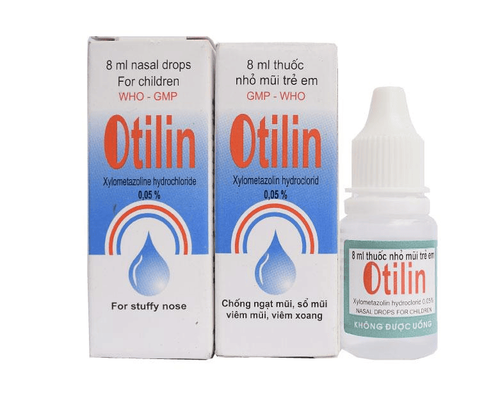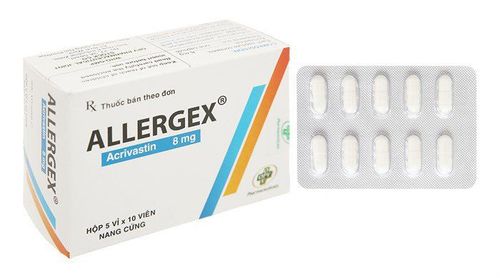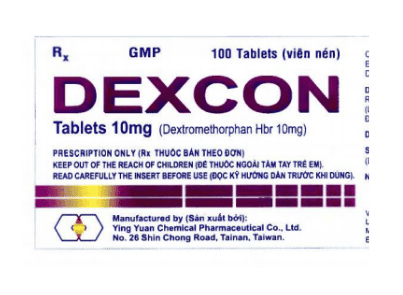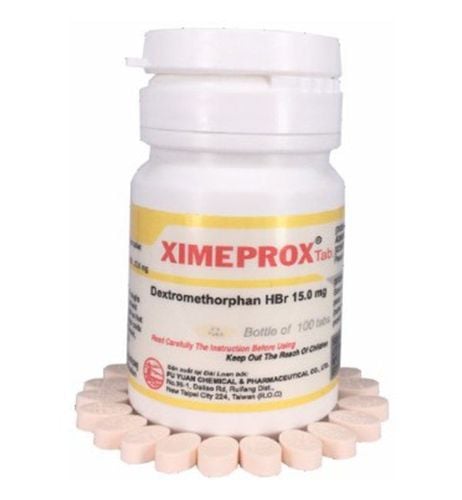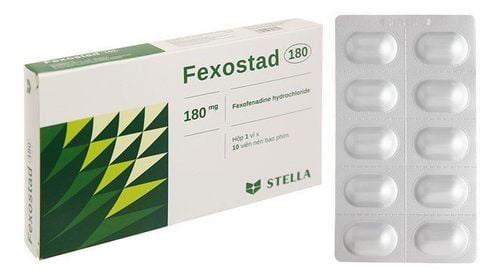This is an automatically translated article.
Rocetaf F is indicated in the treatment of symptoms of influenza and seasonal allergic rhinitis. Learn some information about the uses, dosage and precautions when using Rocetaf F to help patients use the drug safely and effectively.
1. What is Rocetaf F?
Rocetaf F belongs to the group of pain relievers, antipyretics, non-steroidal anti-inflammatory drugs, treatment of Gout and joint diseases. The drug is prepared in the form of film-coated tablets, packed in boxes of 10 blisters x 10 tablets.
Ingredients in the drug Rocetaf F include:
Paracetamol content 500mg; Dextromethorphan hydrobromide content 15mg; Loratadine 5mg. Paracetamol (Acetaminophen or N-acetyl-p-aminophenol) is the active metabolite of Phenacetin. Paracetamol is an analgesic and antipyretic that can replace aspirin but has no effect on inflammation. In equal doses in grams, Paracetamol can provide pain relief and fever reduction similar to Aspirin. Paracetamol in therapeutic doses has little effect on the cardiovascular and respiratory systems, because this active ingredient only affects the cyclooxygenase/prostaglandin of the central nervous system.
Dextromethorphan hydrobromide is a fast acting cough suppressant with a cough center in the medulla oblongata. Dextromethorphan hydrobromide is also effective in the treatment of chronic cough without phlegm. Dextromethorphan hydrobromide is often used in combination with other agents in the treatment of upper respiratory tract symptoms. However, Dextromethorphan hydrobromide has no expectorant effect. Loratadine is a tricyclic antihistamine with a selective long-acting antagonism of peripheral H1 receptors and no CNS depressant effects. Loratadine can also relieve itching and histamine-related urticaria. Loratadine, however, is not protective or clinically helpful in cases of severe histamine release such as anaphylaxis.
2. Uses of the drug Rocetaf F
Rocetaf F is used to treat flu symptoms such as cold cough, fever, headache, musculoskeletal pain, cough, stuffy nose, runny nose and seasonal allergic rhinitis.3. Dosage, how to use Rocetaf F
Dosage and time of taking the drug for each specific case depends on the prescription of the treating doctor. Dosage reference is as follows:
Adults and children over 12 years old: Take 1 tablet each time, 2 times daily. The dose of Rocetaf F above is for reference only. The specific dose of Rocetaf F will depend on your condition and disease progression. To get the right dose of Rocetaf F, patients need to consult their doctor/pharmacist.
4. Contraindications to taking Rocetaf F
Patients with hypersensitivity to any ingredient, excipients of Rocetaf F. People with anemia many times or heart, lung, kidney, liver disease. People with glucose-6-phosphate dehydrogenase (G6PD) deficiency. Patients are being treated with monoamine oxidase (MAO) inhibitors because they can cause severe reactions such as fever, dizziness, high blood pressure, ... even death. Contraindicated in children under 6 years of age. Contraindication is understood as an absolute contraindication, which means that for any reason the contraindication is not flexible enough to take Rocetaf F .
5. Rocetaf F . drug side effects
Common side effects of the drug include:
Fatigue; Dizzy; Fast heart beat ; Nausea; flushed skin; Headache, dry mouth; Skin rash or hives. Uncommon side effects:
Dry nose, sneezing; Conjunctivitis; Hematopoietic disorders causing neutropenia, thrombocytopenia and pancytopenia; Anemia; Renal toxicity with long-term abuse. Rare side effects:
Depression; supraventricular tachyarrhythmias; Palpitations ; Abnormal liver function; Irregular menstruation; Anaphylactic shock; Hypersensitivity reactions; Digestive disorders; Odd behavior due to poisoning; Central nervous system depression and respiratory depression may occur with high doses. If there are any abnormal symptoms suspected of using Rocetaf F, the patient should notify the treating doctor/pharmacist for timely treatment.
6. Precautions when using Rocetaf F
Cough with excessive sputum and chronic cough in smokers, asthma or emphysema, at risk or in respiratory failure, patients with liver failure should be cautious when taking Rocetaf F; Dextromethorphan is involved in the release of histamine, so be cautious with children with allergies. Dextromethorphan abuse and dependence can occur, especially with prolonged high doses. When taking Loratain there is a risk of dry mouth (especially in the elderly) and an increased risk of tooth decay. Therefore, it is necessary to clean the teeth when taking Rocetaf F. Because the drug contains Paracetamol, caution should be exercised in patients with pre-existing anemia. Patients should avoid alcohol while taking Rocetaf F. Occasionally, skin reactions such as pruritic maculopapular rash and urticaria, thrombocytopenia/leukopenia/pancytopenia have occurred with Rocetaf F. for serious skin reactions such as Steven-Johnson syndrome (SJS), toxic skin necrosis (TEN), Lyell's syndrome or acute generalized exanthematous pustulosis (AGEP) with Rocetaf F. Do not use taking Rocetaf F with other medicines containing Paracetamol, Dextromethorphan or Loratadin. Pregnant women need to be careful when taking Rocetaf F. Rocetaf F should only be used when clearly needed in low doses and for short periods of time. Nursing mothers should consider whether to discontinue nursing or not to use the drug because Loratain is excreted in breast milk, affecting the nursing infant. You should consult your doctor or pharmacist before taking Rocetaf F with any other medicines. Use Rocetaf F with caution when driving and operating machinery because of possible fatigue and dizziness effects. To avoid unwanted interactions when using Rocetaf F, patients should inform their doctor/pharmacist of all drugs, supplements, vitamins... they are taking. Above is all information about Rocetaf F, patients need to carefully read the instructions for use, consult a doctor / pharmacist before using to ensure safety for health and maximize effectiveness. treatment.




